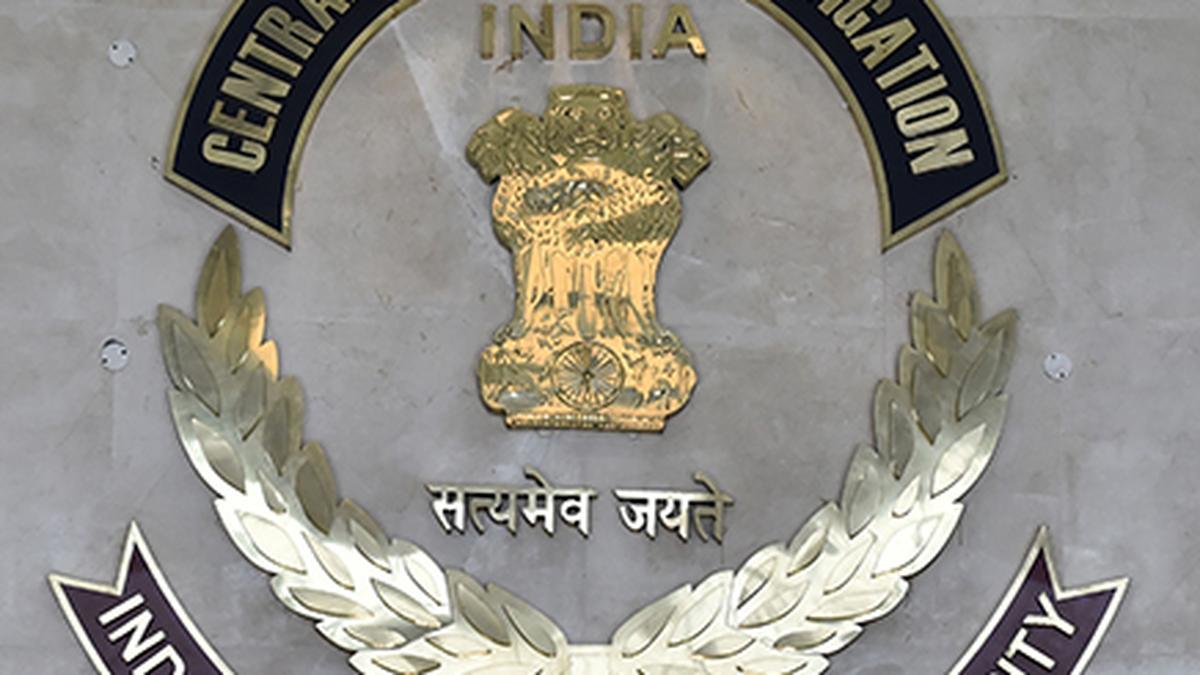The Karnataka government might have set the ball rolling for a second airport for Bengaluru to meet the future demands of the city and the State, but the existing Kempegowda International Airport (KIA) at Devanahalli still has more to offer not just as a world-class airport but as an international gateway to a sustainable smart and vibrant city, say those at the helm.
Over the next decade or so, a futuristic airport city is being developed within the KIA premises, about 40 km north of the city, applying the core principles of ‘work, play, live, learn, and create’.
Sprawling area
Spread over 463 acres, the Bengaluru Airport City will have business parks, a global innovation hub, an education and health district, a retail dining entertainment (RDE) village, a concert arena, a convention and exhibition centre, a knowledge park, an hospitality area, a logistics park, and a central park.
While the business parks will occupy 241 acres of land, the hospitality area will cover 44 acres, RDE village 23 acres, and the remaining 155 acres will have logistics parks, education and health district, aerospace park, corporate retreat, etc.
Overseeing this project is Bengaluru Airport City Limited (BACL), a wholly owned subsidiary of Bangalore International Airport Limited incorporated in early 2020.
Master plan
Before the commencement of the project, BACL officials say they visited Incheon International Airport in Seoul, South Korea, Munich International Airport in Germany, and Amsterdam Airport Schiphol in the Netherlands. BACL officials say they conceived the Bengaluru Airport City master plan after examining these major airport cities.
“The aim was to identify and understand the scale at which airport cities operate, the specific land-use mix and positioning, and best practices deployed in terms of mobility and infrastructure,” officials say.

SATS Central Kitchen, which has come up on 6.7 acres of land at the airport city, has been operational since March 2024. It can produce up to 1,70,000 ready-to-eat meals a day. | Photo Credit: K. MURALI KUMAR
A few projects at the Bengaluru Airport City are already up and running, including the 3D technology facility and a technologically advanced central kitchen. An EV research and development (R&D) facility is being set up by Epsilon Carbon.

The 3D technology facility from Voxeljet Germany, which has come up on a one-acre plot, has been operational since July 2022, and SATS Central Kitchen, which has come up on 6.7 acres of land, has been operational since March 2024. The SATS Central Kitchen can produce up to 1,70,000 ready-to-eat meals a day.
“Bengaluru Airport City strives to be more than just an urban extension — it aims to serve as a catalyst that propels North Bengaluru into a future-ready economic powerhouse. Our vision is to create an environment that functions as a living laboratory, where R&D hubs and global capability centres operate round the clock, driving cutting-edge research, continuous progress, and breakthrough inventions,” says Rao Munukutla, executive director and CEO of BACL.
Hospitality and business park
Bengaluru Airport City will also host one of the largest hotels in the country promoted by Vivanta and Ginger. The 775-room Combo Hotel (Vivanta and Ginger), which is under construction, is expected to be operational in October 2026. The proposed hotel comprises a combination of a 450-room Vivanta (four star) and a 325-room Ginger (three star) hotels.
According to the BACL, a demand study had shown a potential to develop up to 5,200 keys (accommodation units) in total to cater to the needs within the airport city. At present, there is one five-star hotel operational within the airport, Taj Bangalore, with 370 rooms.

The Bengaluru Airport City will also host one of the largest hotels in the country, promoted by Vivanta and Ginger. The 775-room combo hotel is expected to be operational in October 2026. | Photo Credit: K. MURALI KUMAR
“Hospitality will be a big story on this campus. While we complete the airport city, we will have 5,200 keys. So technically, if you take 100 keys as a standard hotel, it is equivalent to having 52 hotels on this campus,” Munukutla says.

The BACL will also develop 28 million sq. ft of business parks over time, starting with the first phase of 2 million sq. ft. This will cater to the requirements of the global capability centres (GCCs), technology companies, and financial institutions. The construction for Phase 1 of 0.5 mn sq. ft has commenced.
In addition, the BACL, along with the Government of Karnataka, recently announced the establishment of the global innovation hub — District I — within the business park to bring together GCCs, IT service providers, accelerators, corporate labs, start-ups, venture capital firms, academia, and public institutions.
“In Bengaluru, start-ups are scattered across the city. There are a few in Koramangala and a few in Whitefield. There is no place like Silicon Valley, where all the start-ups are in the surrounding area of Stanford University and San Francisco. The District I fixes this issue,” Munukutla says.

Work on business park cluster in progress at the airport city. | Photo Credit: K. MURALI KUMAR
An Air India Academy will also become operational by July 2026, where approximately 360 students will get trained every year.
“Airports and airport cities are socio-economic hinges. Students from Devanahalli and surrounding villages can get trained in this academy. The qualification for getting trained here is a class 10 or class 12 pass. They will be learning hands-on aircraft maintenance. Then they will get absorbed in our maintenance, repair and overhaul (MRO) facilities. We have got an Indigo MRO here and Air India is also building a massive MRO,” Munukutla says.
Addressing vibrancy
Munukutla opines that vibrancy is missing in Bengaluru when compared with global cities. “For any city to be dynamic, vibrancy is very important. We want the airport city to be a vibrant destination,” he says.
At the Bengaluru Airport City, a Concert Arena is also being constructed, which is expected to be operational by the end of 2026. Designed to be a state-of-the-art, fully integrated, technologically advanced venue with world-class acoustics and flexible infrastructure, it will accommodate 10,000 people.

This Concert Arena is the first of its kind in an airport city in India, and it is being developed in technical collaboration with Live Nation, U.S.
“We will have a metro station. People from Bengaluru can take a train and come here for the shows at the Concert Arena. Not just people from Bengaluru but people from all over India and the neighbouring countries, East Asia, Malaysia, and Indonesia can fly to Bengaluru and stay in the hotels here, so all these make the airport city a destination by itself,” says Munukutla.
Smart, sustainable
The Airport City draws inspiration from the Singapore Smart City.
“Built environment and city management, urban mobility, energy, environment and water, and safety and security these are the five pillars on which Singapore works, from there we derived 12 solutions which are: advanced security and surveillance, PA system and AI-based video analytics, smart traffic management, smart energy management, smart streetlight, environment monitoring, waste management, transport management, smart kiosk, digital signage, public Wi-Fi, and the airport city mobile app. We are applying these solutions to our airport city,” says a BACL official.

The BACL says that the airport city’s urban design guidelines are aligned with the U.N. Sustainable Development Goals by promoting mixed use development to ensure that it becomes inclusive, safe, resilient, and sustainable.

The six-lane tree-lined road at the airport city in Bengaluru. | Photo Credit: K. MURALI KUMAR
In addition, the BACL and the Indian Institute for Human Settlements (IIHS) have signed a memorandum of understanding to jointly advance sustainable, energy-efficient developments, aligned with global best practices in high-performance building design at the airport city.
Through its ASSURE programme, the IIHS also aims to accelerate the development of super-efficient, high-performance real estate in line with India’s climate goals.
The BACL has also received the IGBC Green City ‘Platinum’ rating for green master plan and design and policy interventions for the entire development.
Munukutla says that 90% of the project work will be completed by 2038, and the last 10% in the subsequent years.
Will it work?
Aviation experts and urban planners have welcomed the move to establish the airport city, which they say can evolve into a central business district by itself.
“It will work because you are going to have campuses that will be very close to the airport. The new aero city is following the similarities of quite a few global airports, but newer generation airports and not older generation ones,” says aviation expert Devesh Agarwal.
He adds that if the planners are building an entertainment district or a chain of restaurants it will work as well.

“If you see, the northern Bengaluru area does not have too many food and beverage outlets beyond Jakkur. Jakkur is kind of the limit; after that, you don’t really see any concentration of restaurants and pubs. So, if a complete entertainment and hospitality district is created — a sort of what has been done in Delhi aero city where they have a mall with many restaurants inside — it will work out. I also think they will focus on what is called the meetings, incentives, conferences, and exhibitions sector,” he adds.
Unique venture
Another expert says that when the Bengaluru Airport City comes up, it will truly be India’s first airport city. “Though Delhi has an aero city, its concentration is more on hotels and restaurants, unlike this one, where you have a mix of business and entertainment,” says an expert.
(Edited by Giridhar Narayan)



.png)
.png)
.png)
















 5 hours ago
7
5 hours ago
7









 English (US) ·
English (US) ·